Introduction
Some of the following pictures are already known from my social media accounts, but I did not put them in a proper review by now. During my last trip to Carinthia I took the time and made some pictures of both PenCott Metropolis and SloCam in a rocky, alpine environment. The reason behind this was quite apparent.
PenCott Metropolis, obviously designed for a urban environment, also has the perfect properties to be used in a mountainous setting because of its choice of colours. Everyone who followed my previous field tests of the pattern got already a glimpse of its potential.
SloCam, being the universal pattern that it is, was also designed with the Karst mountains of Slovenia in mind. Having this in mind, I wondered why I did not try it out in a setting like this before.
With that being said, this is no real comparison test, because you cannot compare the two camouflage patterns. The one being specifically an urban one, and the second a universal, if not temperate one. At the same time, both have rocks in their “portfolio” so, why not try it.
But first things first – my methodic caveat.
Methodic remarks
As always I have to point out several aspects beforehand. I do not claim any scientific standard with my camouflage field tests. Also, I conduct them with my best knowledge and the available resources. For example: At the moment there is not much gear available in both SloCam and Metropolis.
The pictures were taken at a new location, which can be described as rocky, mountainous.
Before I start, please consider the following – as always:
I did not edit the pictures in any special way, except the following:
- Lens correction
- Watermark
- Blurred my face out if necessary
- .jpeg compression to make it web compliant
- I always do a proper White Balance to make colors appear the way they are.
A short explanation to the environment and the procedure:
The two patterns were tested on a rock face. There is almost no vegetation other than moss, everything is under the open sky and the only concealment are stones and rocks, maybe little holes. So a quite tricky environment which makes camouflage even more important.
The pictures portray three different positions:
- Standing in the open (to get an idea of the pattern in this particular surrounding and if the colors match it)
- Sitting
- A leaning position (to mimic basic concealment/cover, without using vegetational enhancements)
As always I photographed with a wide angle lens (18mm and 24mm) at first and then with a 35mm zoom, which mimics the actual picture the human eye would perceive at this distance. Having in mind the three different positions mentioned before, I ended up with 9 pictures of each pattern.
The distance to the camera is always 10-15m, the wide angle makes it look further away (which is the point).
With that being said, let’s take a closer look at the pictures themselves.
PenCott Metropolis in an alpine setting
I wrote about PenCott Metropolis already extensively, so I will come straight to the point. Given the colours of PC Metropolis which are dominated by greys and browns, it perfectly fits in rocky environments.
Wide angle – 18mm
Starting with a wide angle of 18mm to give you the perception of a longer distance you can clearly see how the macro elements break up the silhouette of a standing person very effectively. This in combination with the colours of the midi and micro elements make the human shape blend in.
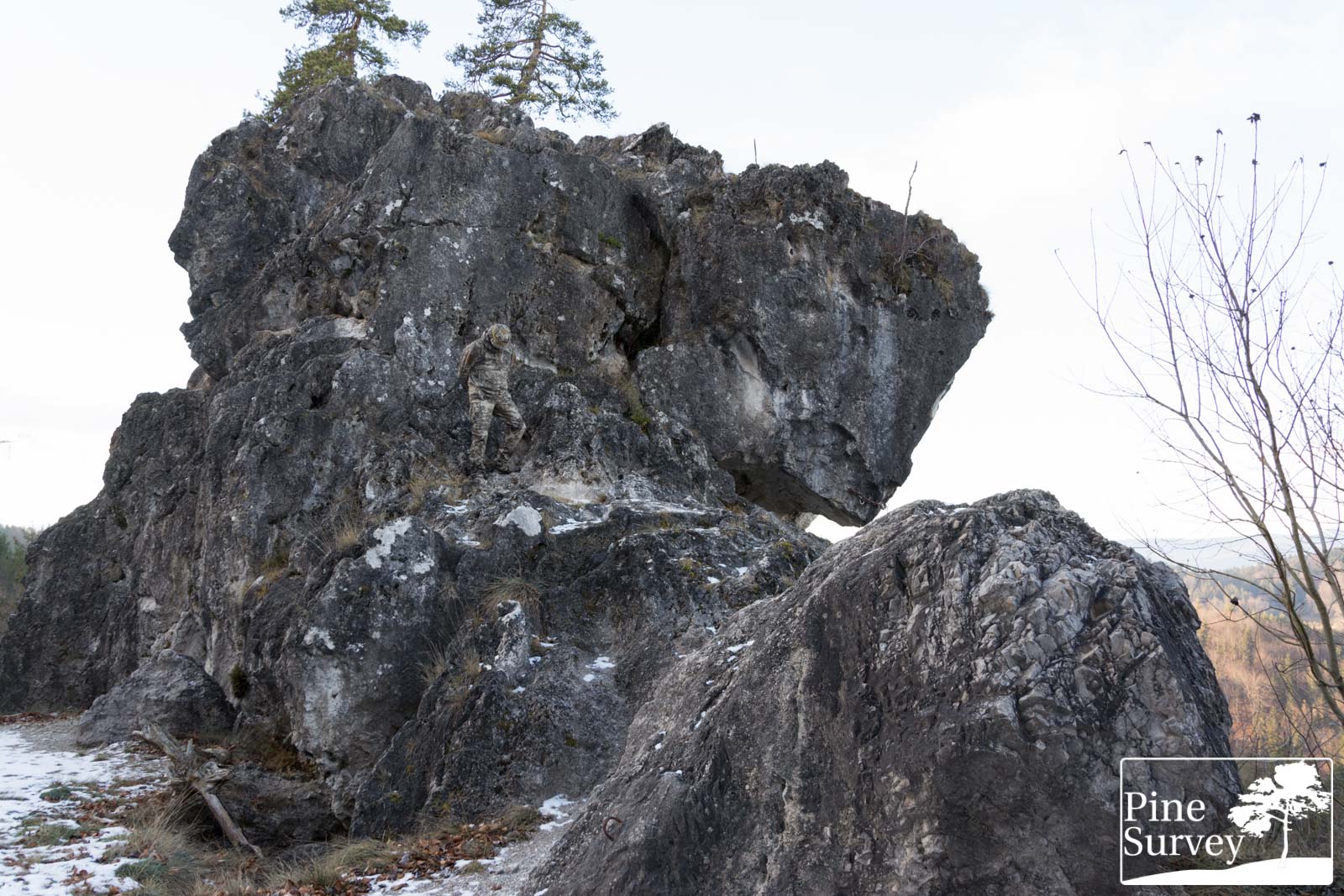
PenCott Metropolis – standing, 18mm, wide angle
As always, minimizing the human silhouette increases the effect. By sitting down the pattern geometry and colours are even more effective in disguising the person.
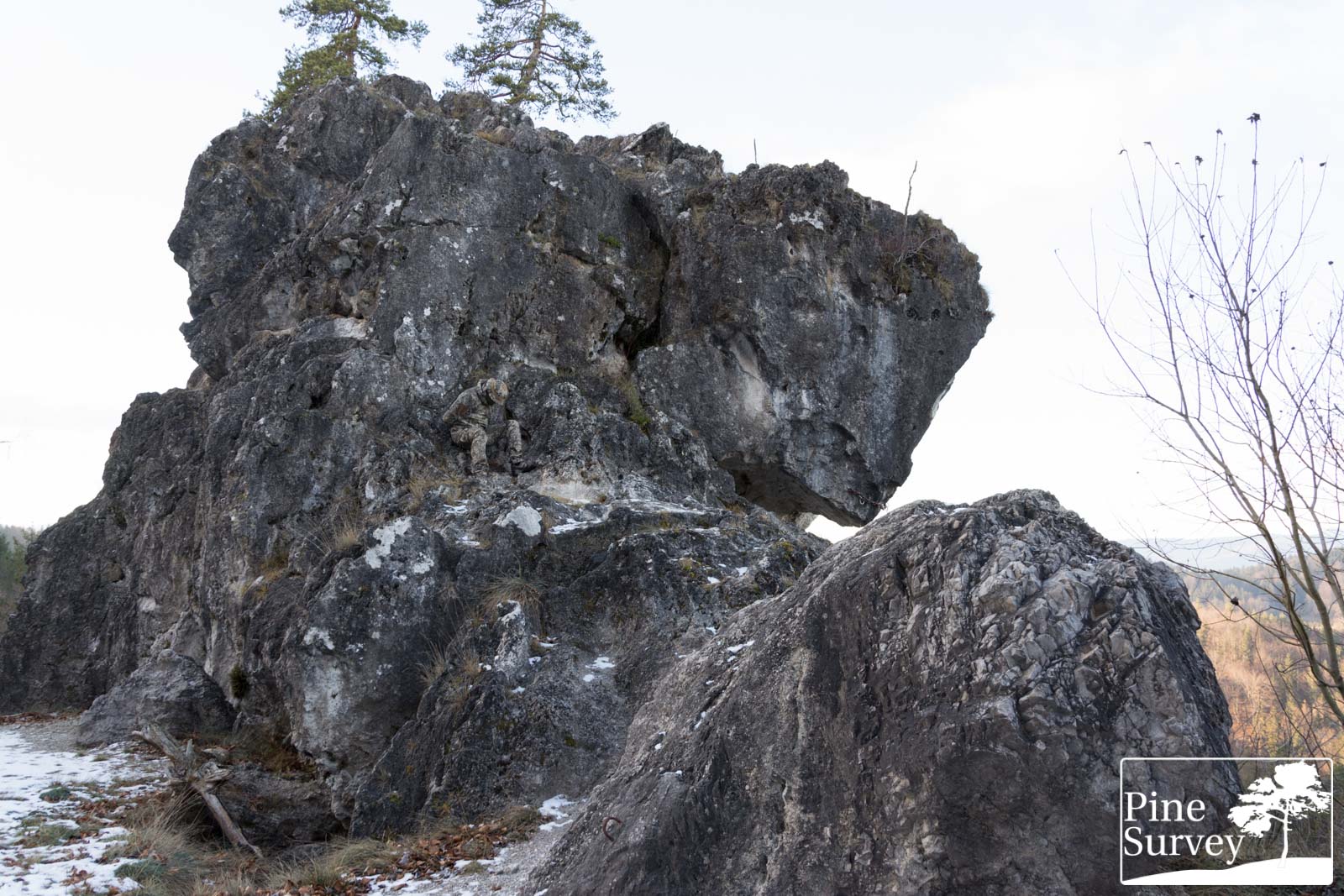
PenCott Metropolis – sitting, 18mm, wide angle
The leaning position is similar so I can spare my comments. Nevertheless you get an additional impression of another position.
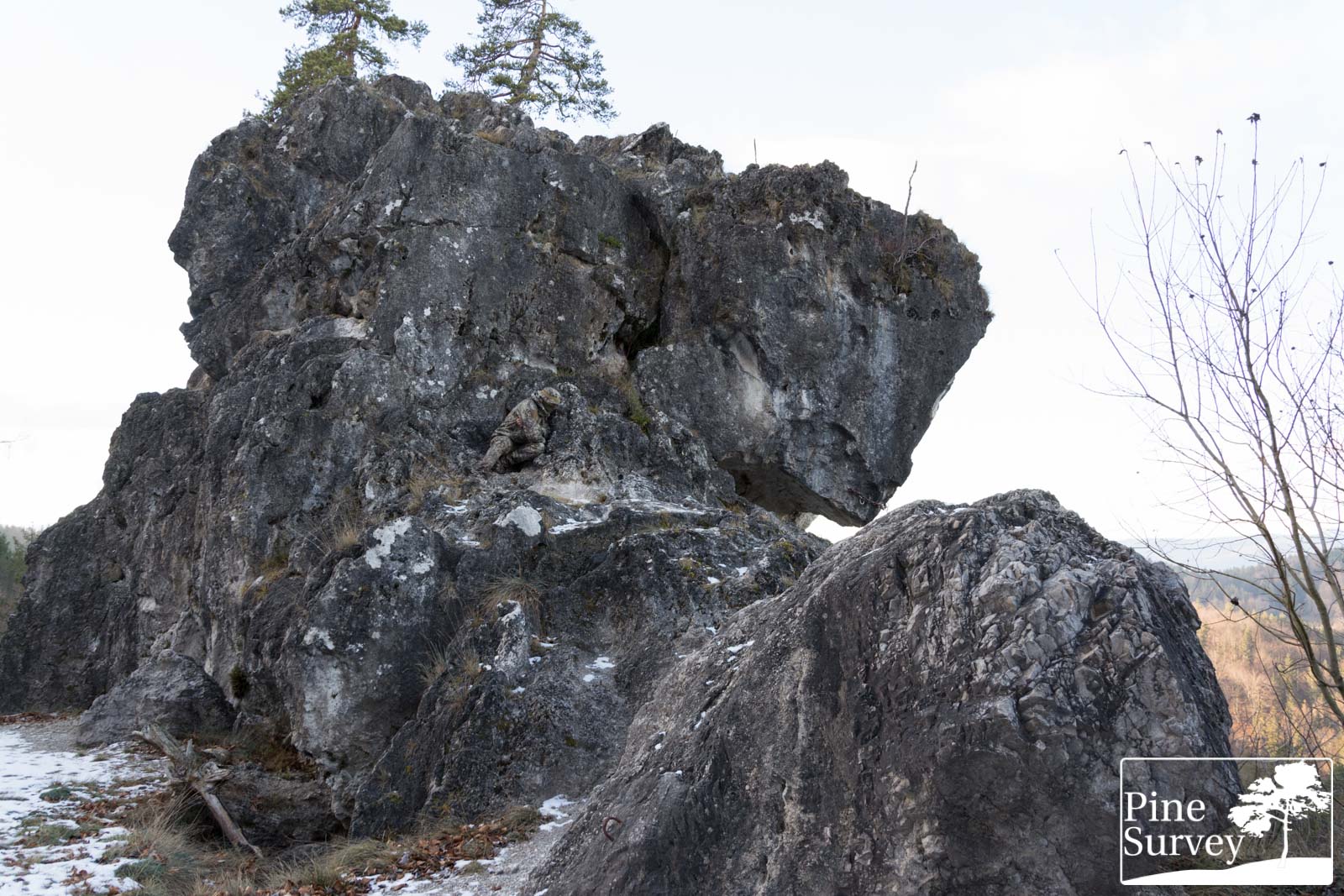
PenCott Metropolis – leaning, 18mm, wide angle
Wide angle – 24mm
Getting a bit closer with a 24mm shot you have the same environment and pattern at work. You can clearly see now, how the macro elements break up the human shape on the upper legs, the knee and the chest/belly. The colours match the surroundings quite a lot, therefore increasing the effectiveness of the pattern geometry.
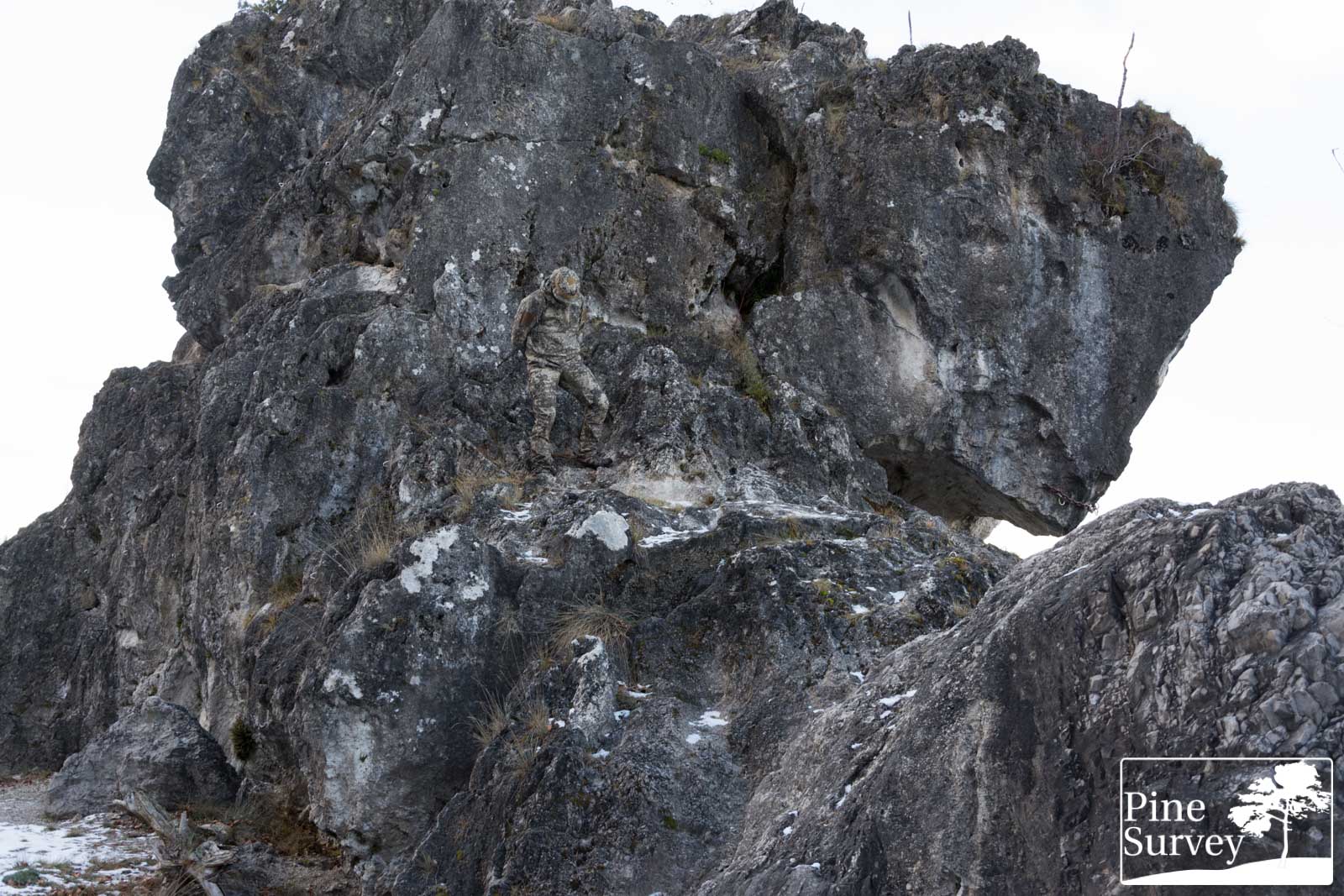
PenCott Metropolis – standing, 24mm, wide angle
This becomes even more apparent in the sitting position. At this point I would repeat myself, so I let the pictures speak for themselves.
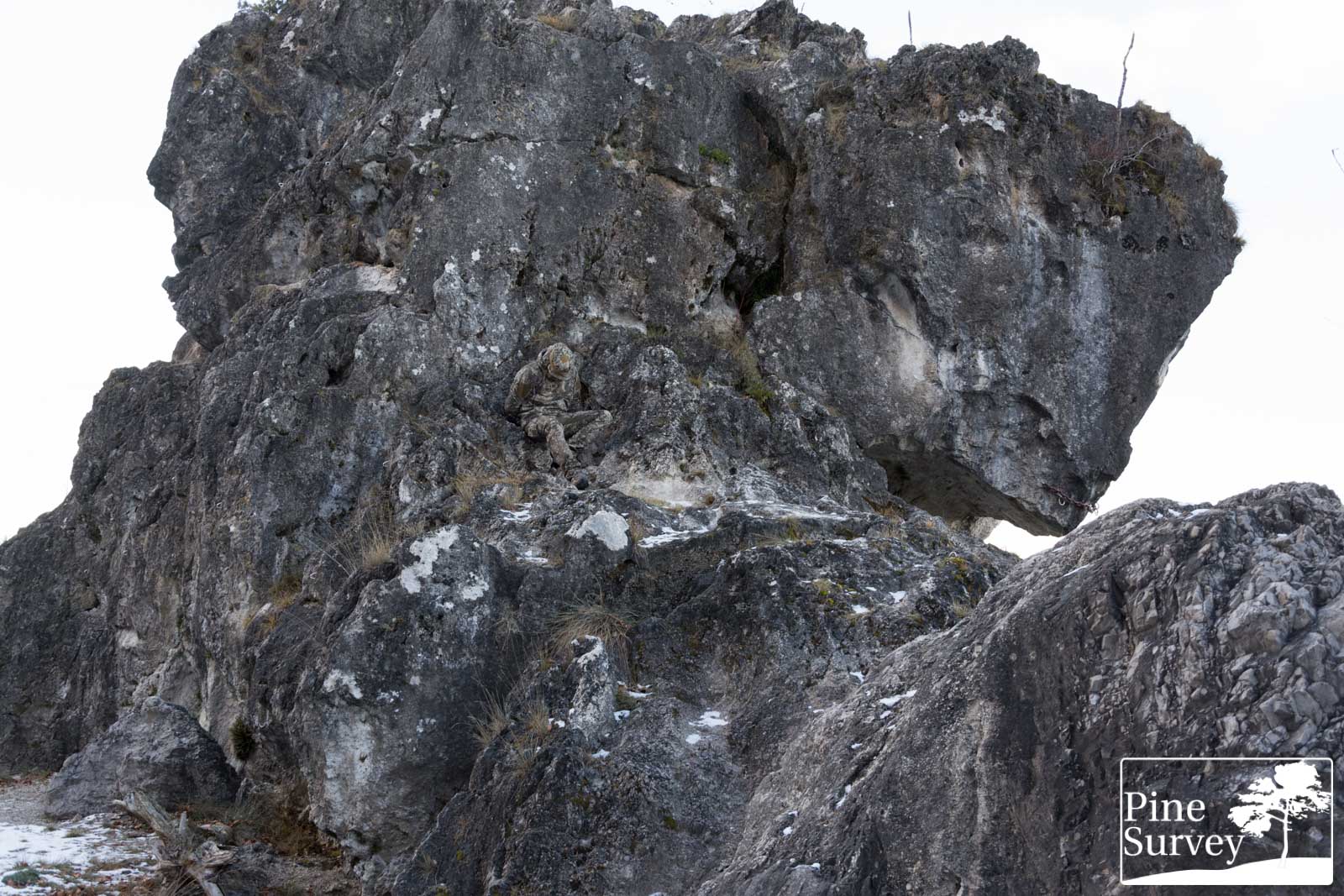
PenCott Metropolis – sitting, 24mm, wide angle
The leaning position actually points out the effectiveness of the pattern by my lacking face cover over the eyes. The skin is easily identifiable and immediately stands out because of its colour.
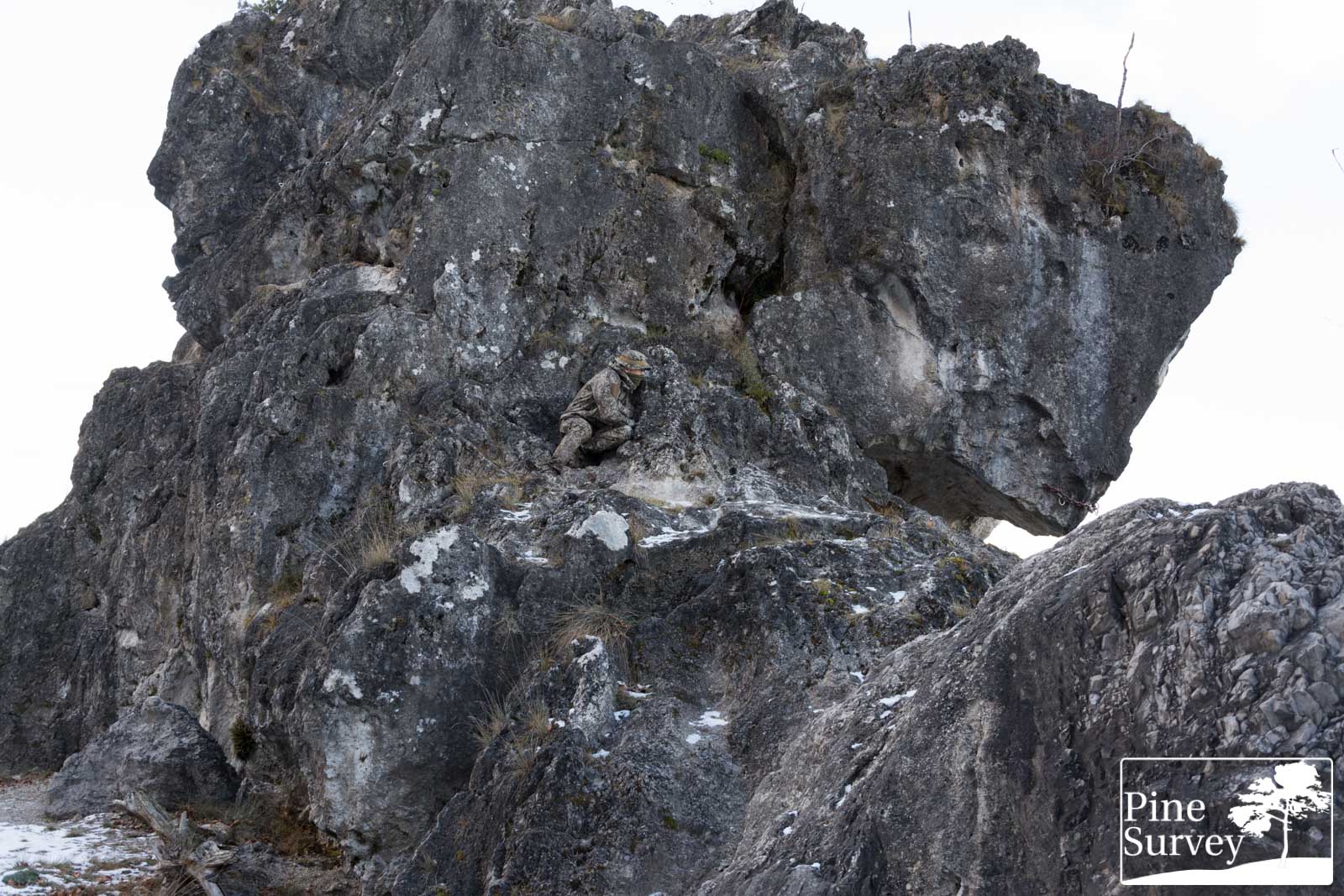
PenCott Metropolis – leaning, 24mm, wide angle
35mm – human visual perception
Coming now to the close up of 35mm which is close to human visual perception. In this picture of the standing position you have an even closer look at the pattern geometry and the macro, midi and micro elements at work. It becomes even clearer what I meant with the breaking up of the silhouette, when looking at the knee, the upper legs and even more so with my lower legs!
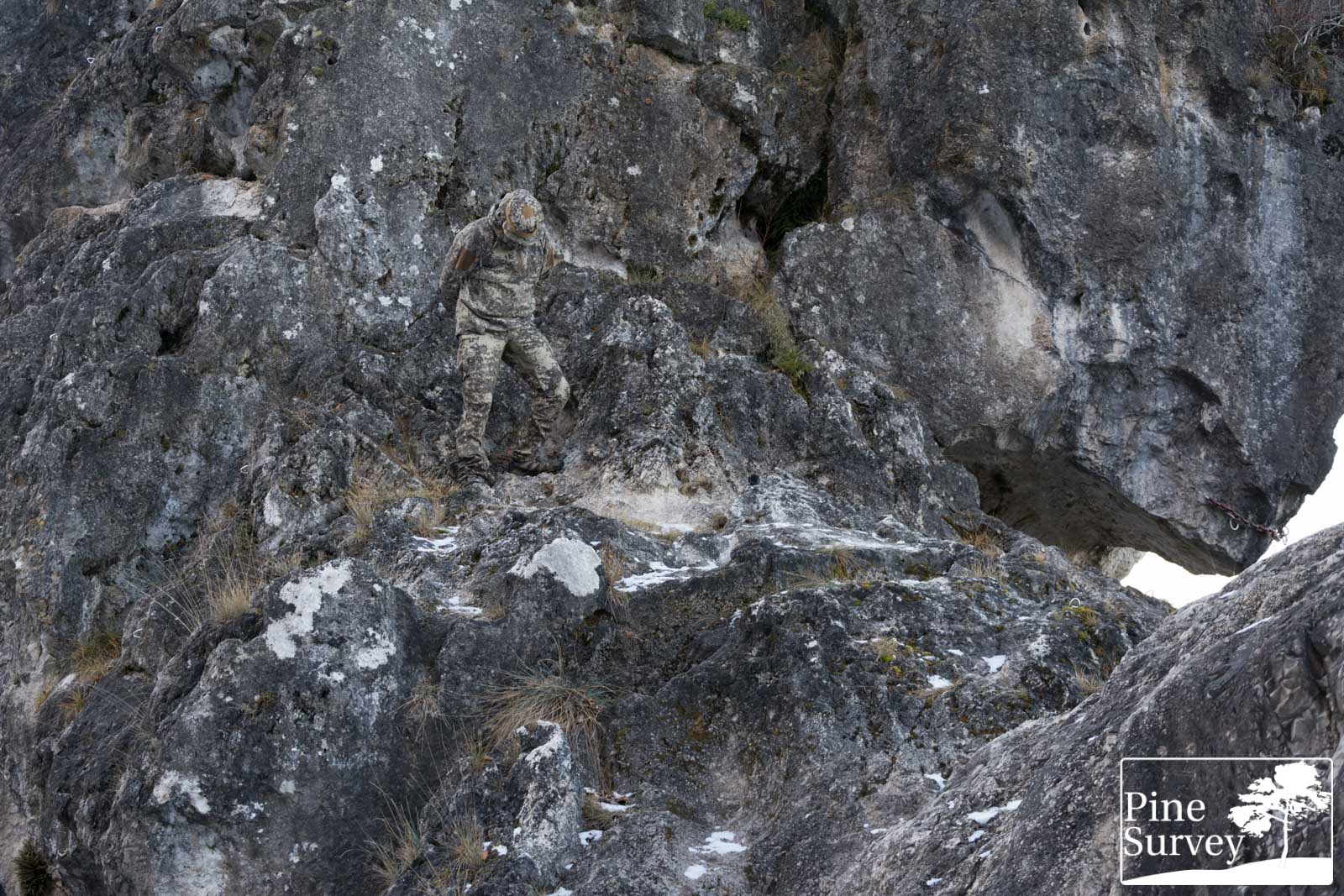
PenCott Metropolis – standing, 35mm
In the sitting position the left leg (or in this case the right leg) completely blends into the surroundings. The only thing standing out is the webbing on the Boonie and some velcro areas. The rest melts into the rock face.
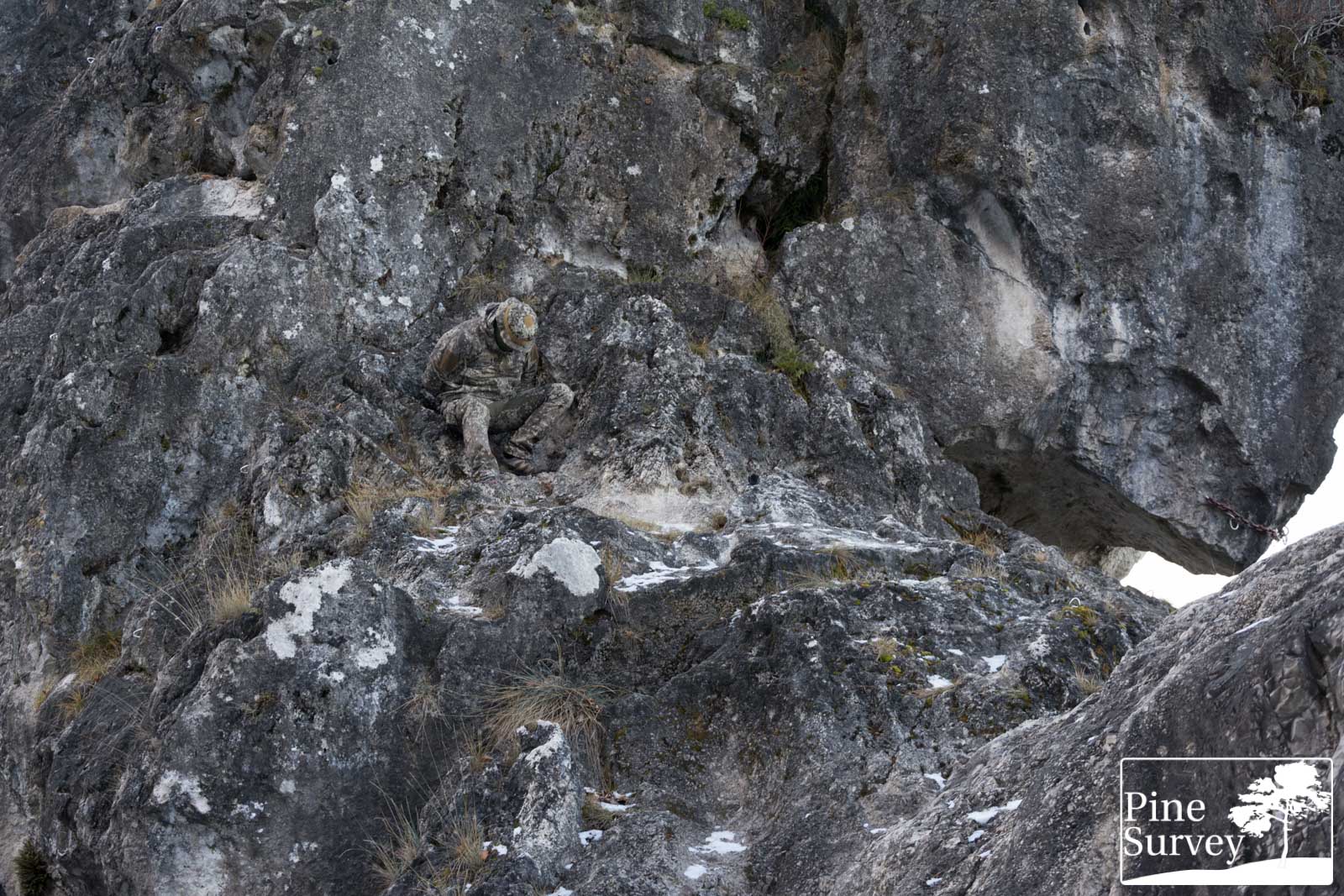
PenCott Metropolis – sitting, 35mm
The third picture in the leaning position provides a similar impression, although there are more shadows, which could be easily holes in this environment.
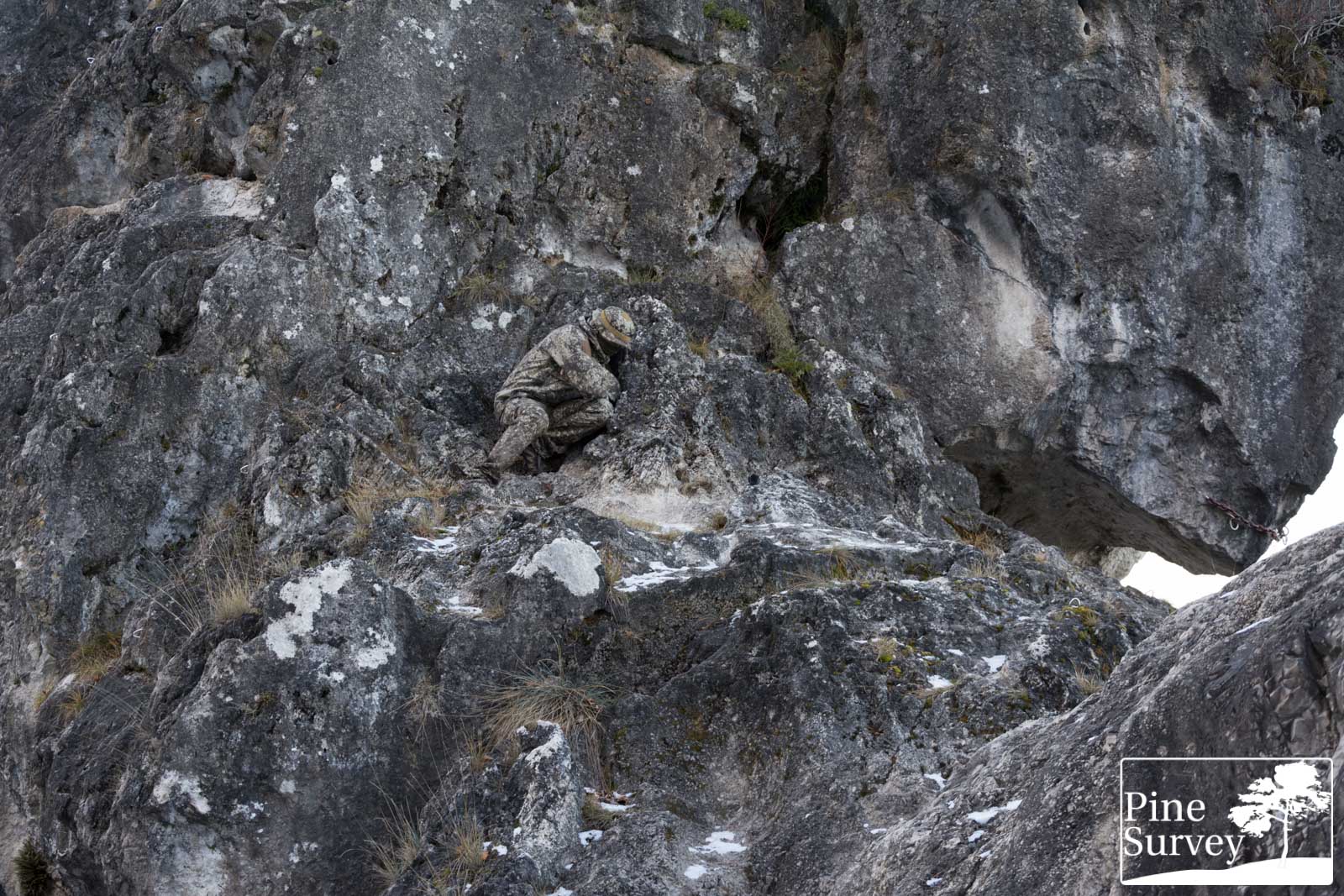
PenCott Metropolis – leaning, 35mm
Concluding remarks about Pencott Metropolis
Several people commented on the potential of PenCott Metropolis as a perfect pattern in a mountainous setting. With this pictures I think I could provide them with visual arguments for their correct opinion.
Even though designed primarily as an urban pattern, PenCott Metropolis has ideal properties to be used in an alpine setting. It should not come as a surprise, given the very similar colours of both urban and mountainous settings, but at the same time their demanding requirements because of the various different variations of the said areas. In any case, PC Metropolis proved to be a versatile and effective pattern in various environments.
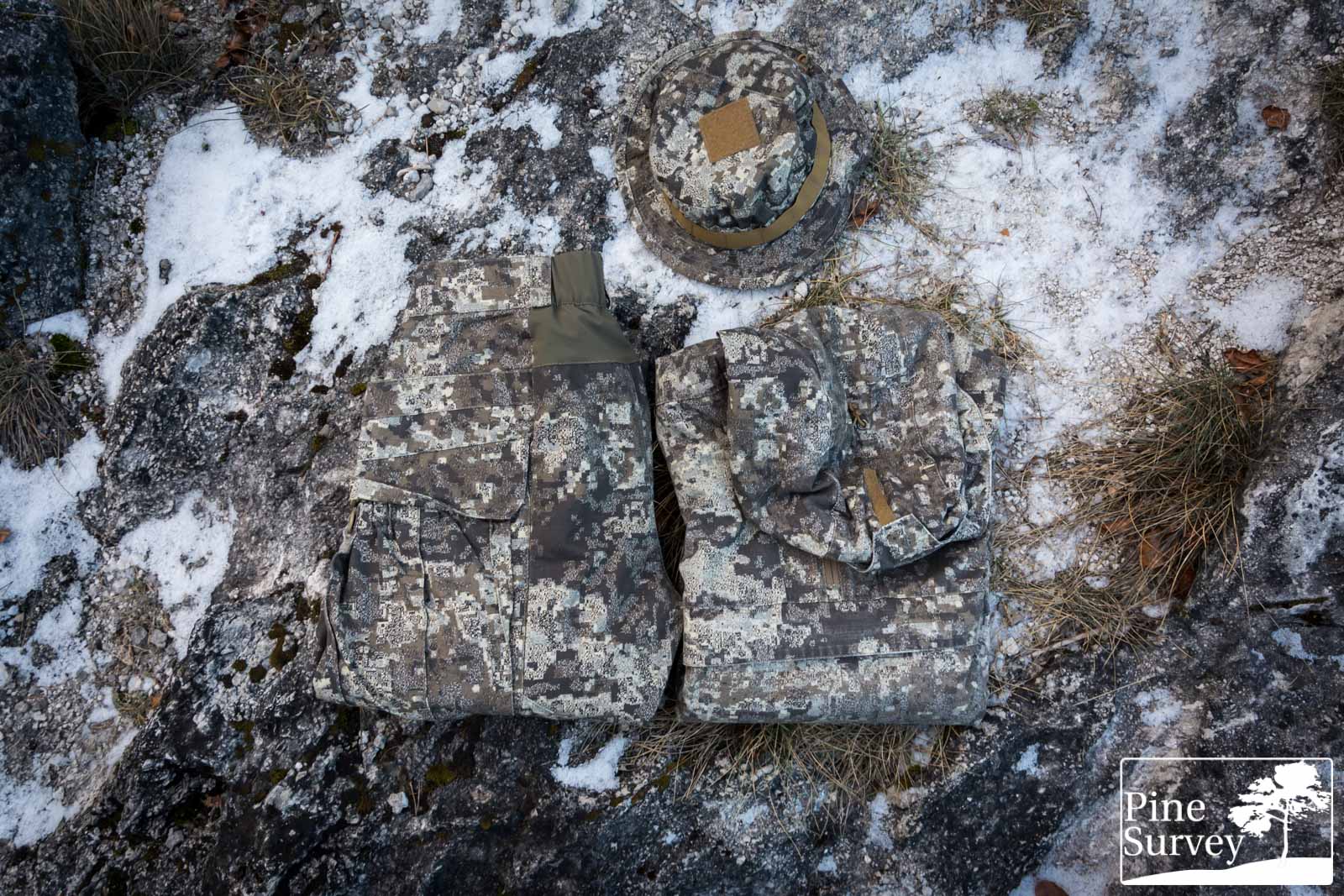
PenCott Metropolis on the rocky floor – no editing done
SloCam in an alpine setting
The Slovenian pattern was also written about quite extensively here on Pine Survey. And I have to say that I am really impressed by the versatility of this pattern, even though you might not hear about it as often from me.
SloCam is much more darker than Multicam, higher in contrast and features plenty of light colours that are of use in a rocky environment.
Wide angle – 18mm
Starting again with the wide angle to portray a longer distance, you can see how surprisingly well SloCam blends into a rocky environment. While not being as effective as PenCott Metropolis (for obvious reasons) the high contrast of the midi elements is breaking up the human shape, especially in the leg area. The colour range is not so bad either in this setting. The bright brown tones and whites make the pattern blend into its surroundings.
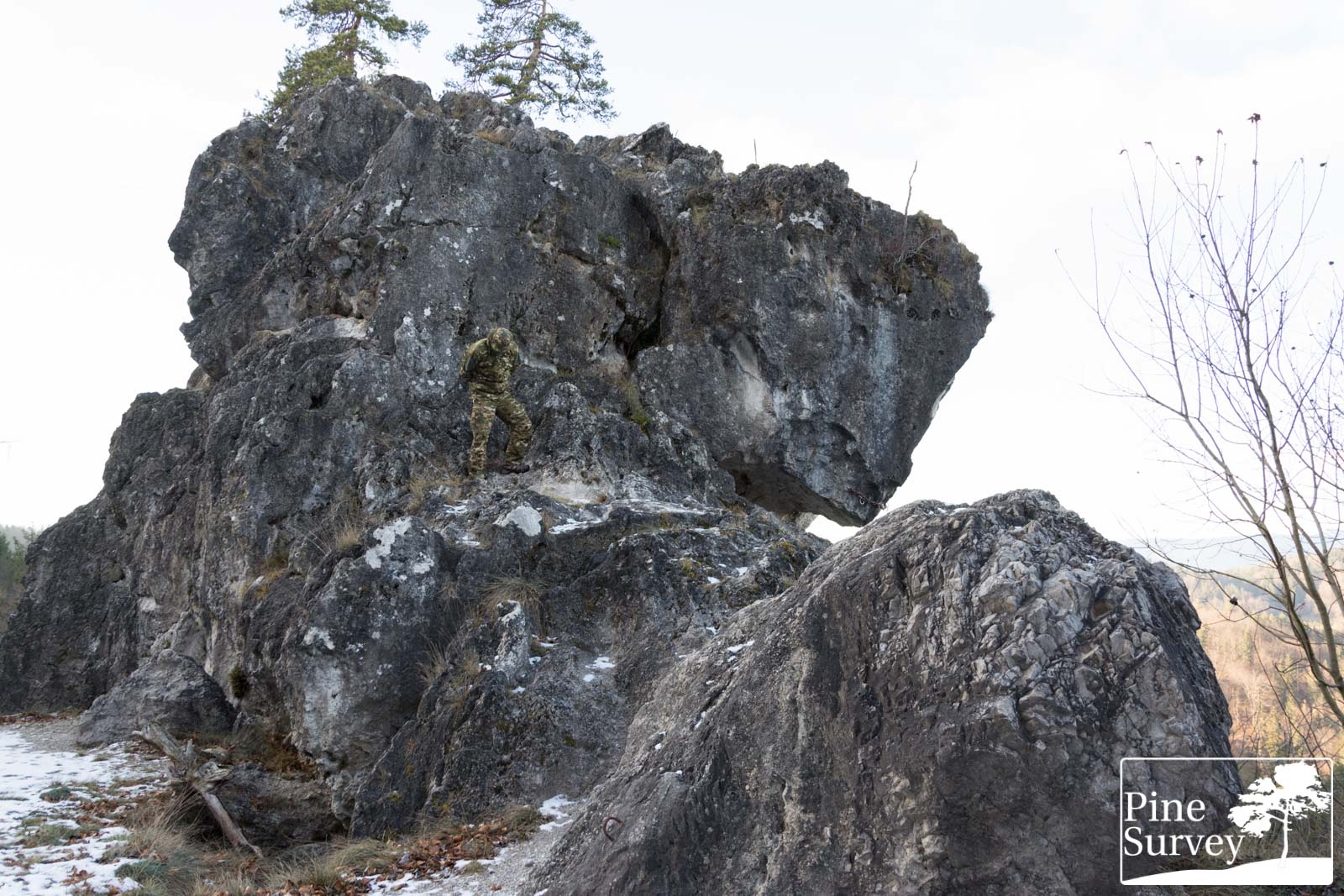
SloCam – standing, 18mm, wide angle
The effect increases again when changing into a smaller position. The leg on the right completely melts into the background, as does the torso. The green elements of the pattern are perceived as random moss and grass of the environment.
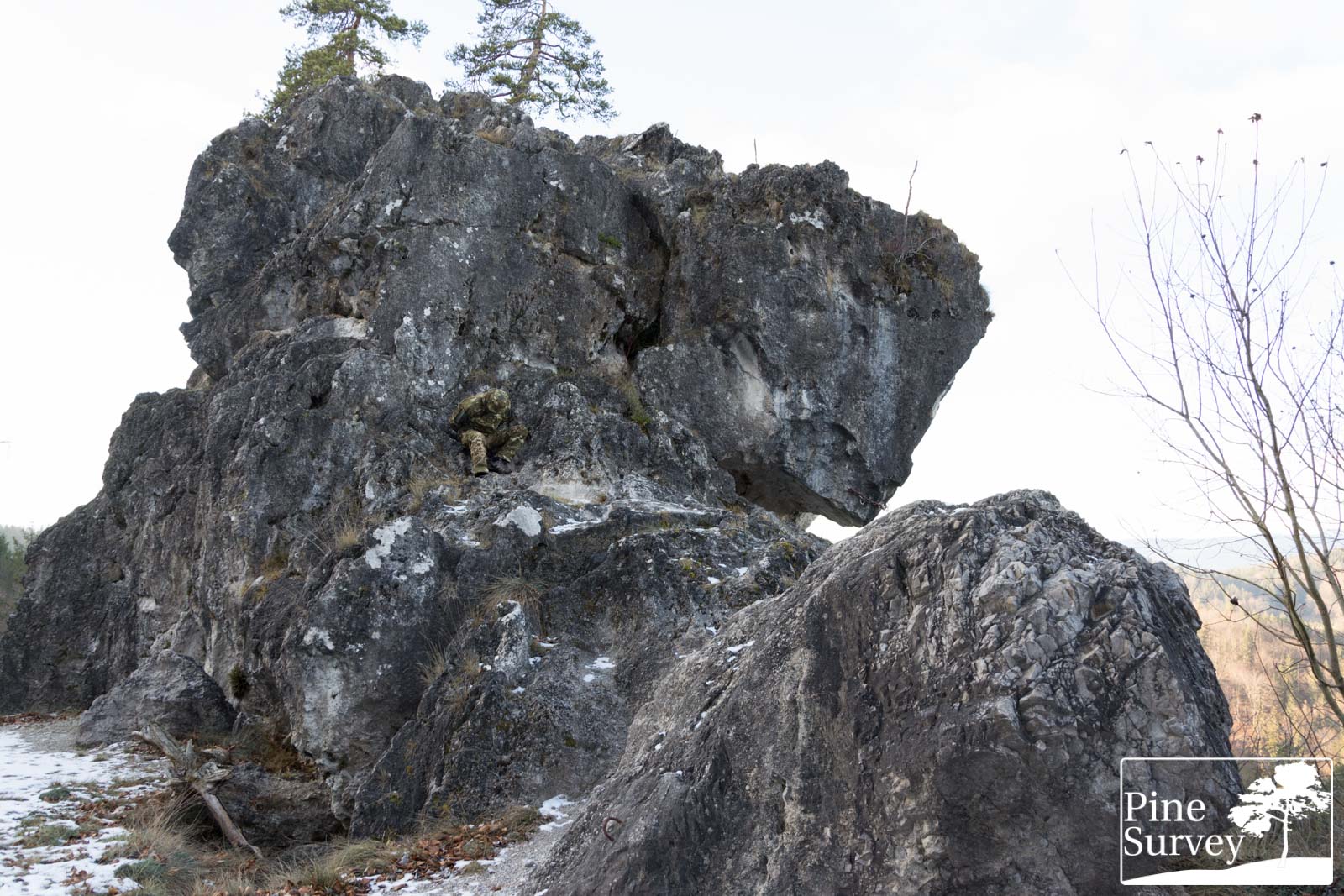
SloCam – sitting, 18mm, wide angle
The leaning position gives another impression of the high contrast midi elements and the colours. The human shape is effectively broken up, the only thing standing out is that the whole area does not completely fit into the rest of the colours of the surrounding area.
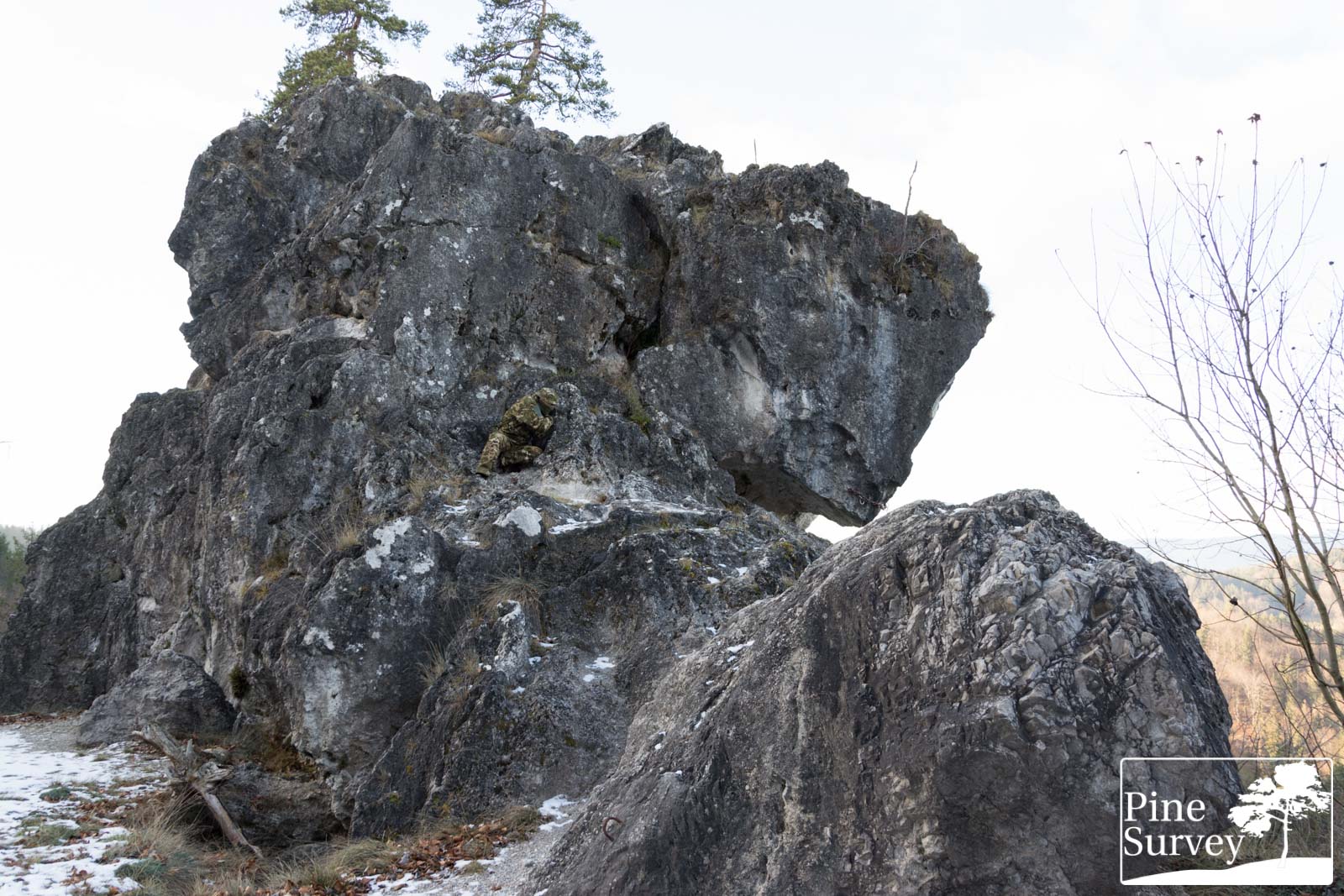
SloCam – leaning, 18mm, wide angle
Wide angle – 24mm
Getting a bit closer with 24mm, you can actually see the different coloured midi elements and how the high contrast provides a good disruption of the silhouette. Especially the bright elements do a lot of work here.
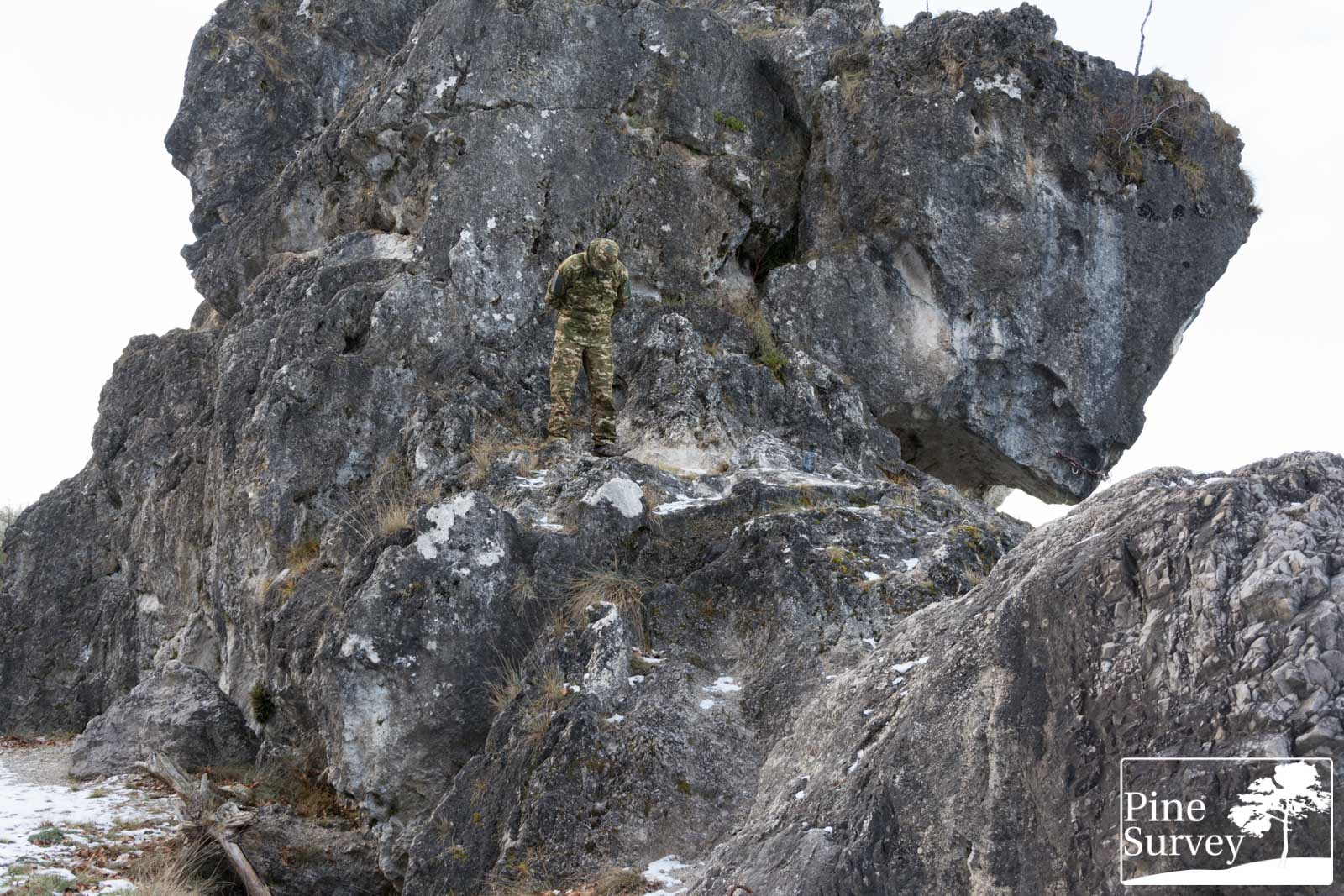
SloCam – standing, 24mm, wide angle
The same can be said when sitting down. The midi elements are highly effective because of their high contrast. Another thing worth mentioning is the fact that the velcro areas of the uniform support the camouflage effect in this case – being sorts of grey.
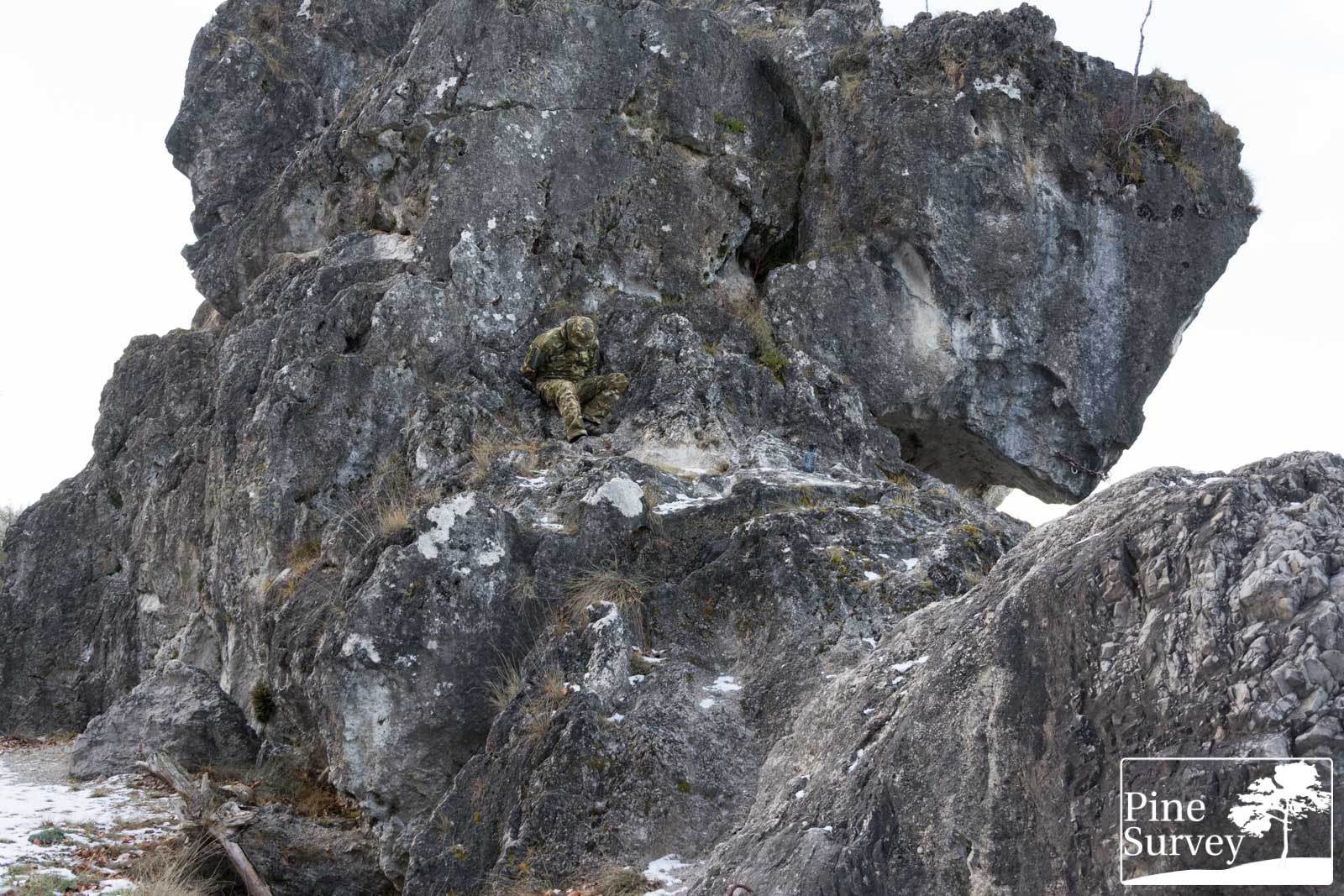
SloCam – sitting, 24mm, wide angle
The leaning position gives you the same setting with a different position of the human shape. Nothing more to say here.
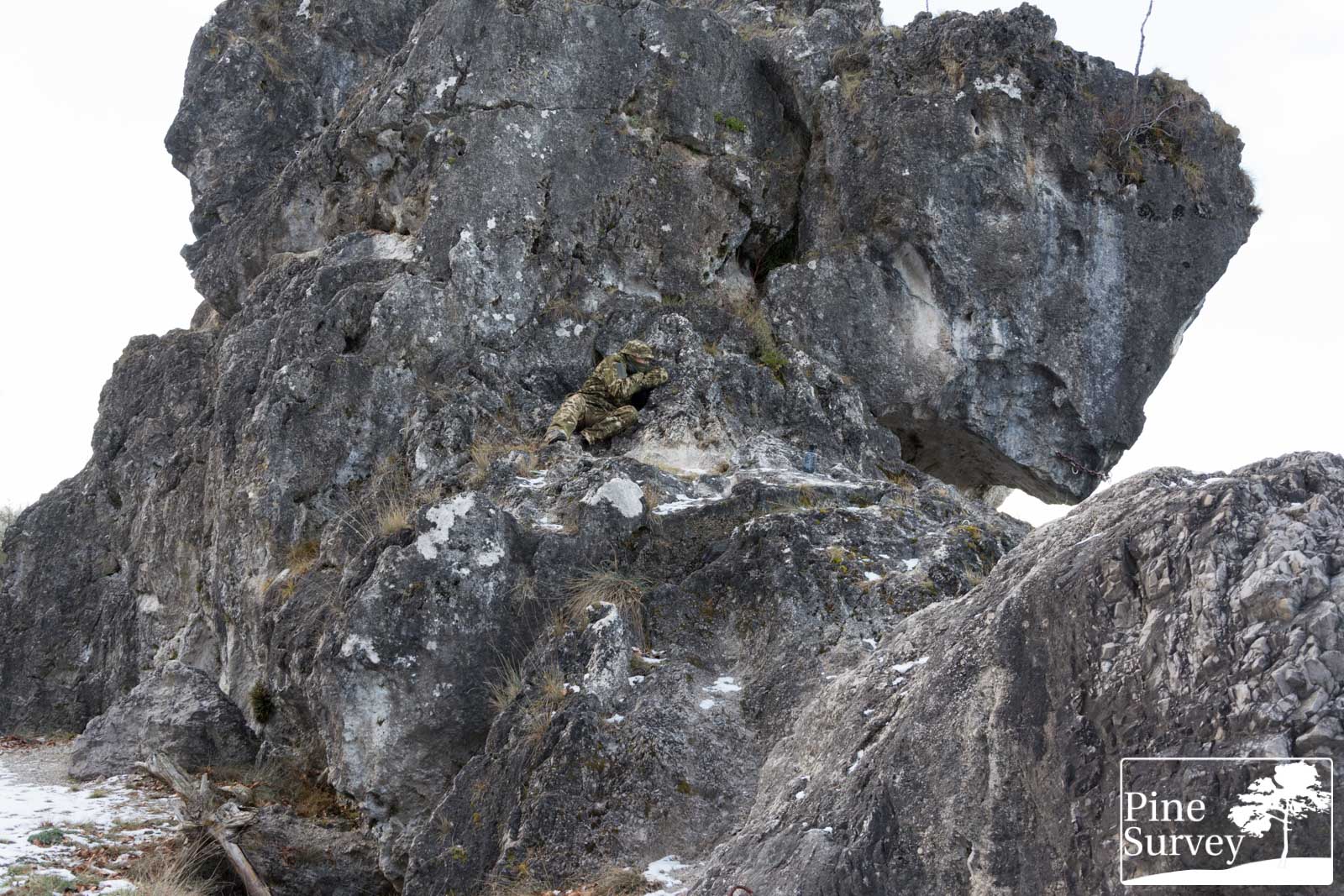
SloCam – leaning, 24mm, wide angle
35mm – human visual perception
Coming now to the 35mm pictures, showing the actual distance of 10-15m. At this close proximity you can get a closer look at the pattern elements of SloCam. While the left leg stands out because of its brightness, the leg on the right blends in rather well. Overall, even though SloCam is green dominant, the Slovenian camouflage pattern blends in quite well. Especially if you have in mind that it is an example of the universal camouflage trend.
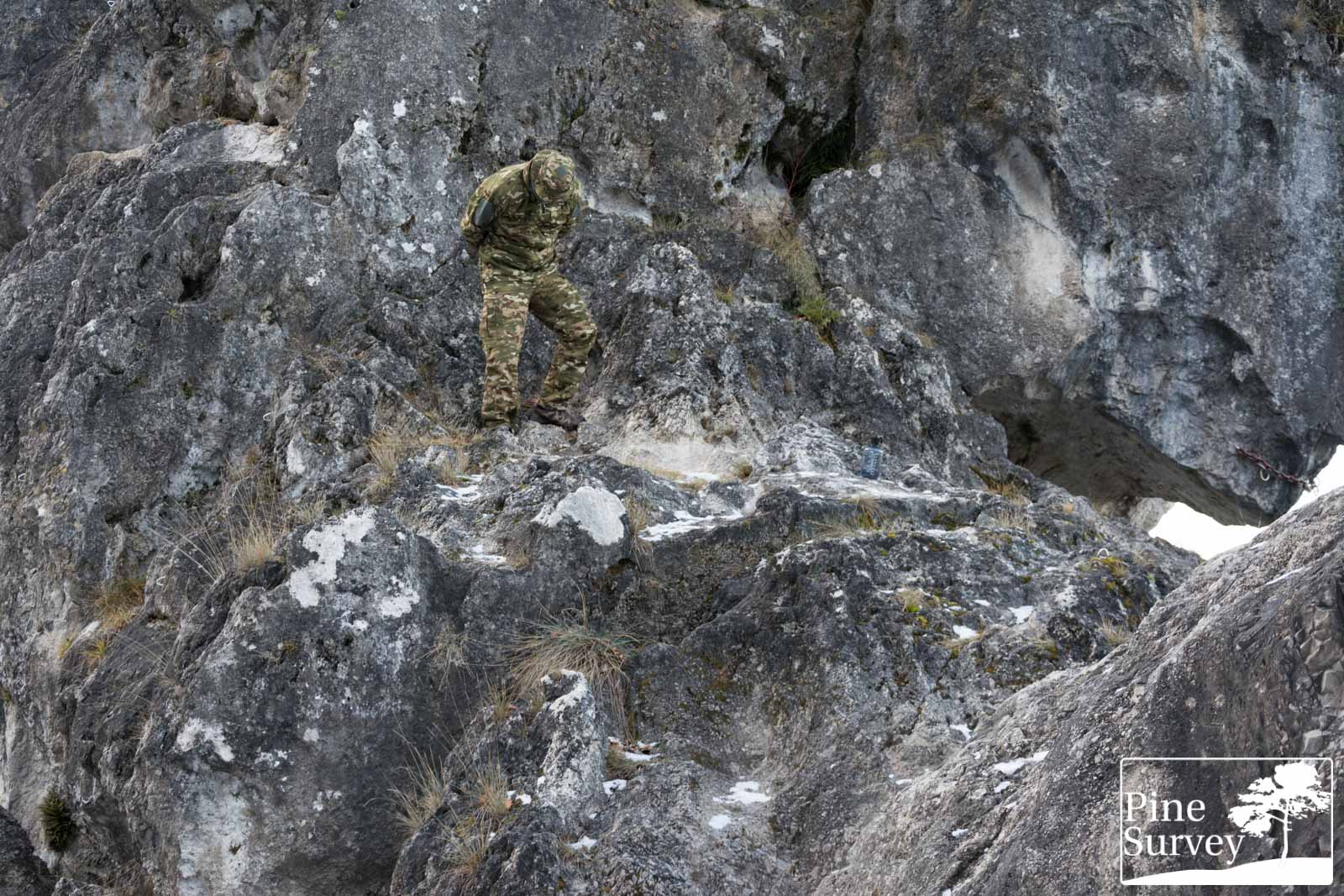
SloCam – standing, 35mm
By minimizing the silhouette, the effect increases again. Areas in the shade or background blend in better than the ones in the front, but overall there is a decent camouflage, considering the person is without cover and in the open.

SloCam – sitting, 35mm
The same can be said in the leaning position. This picture is another example for the importance of covering every part of skin.
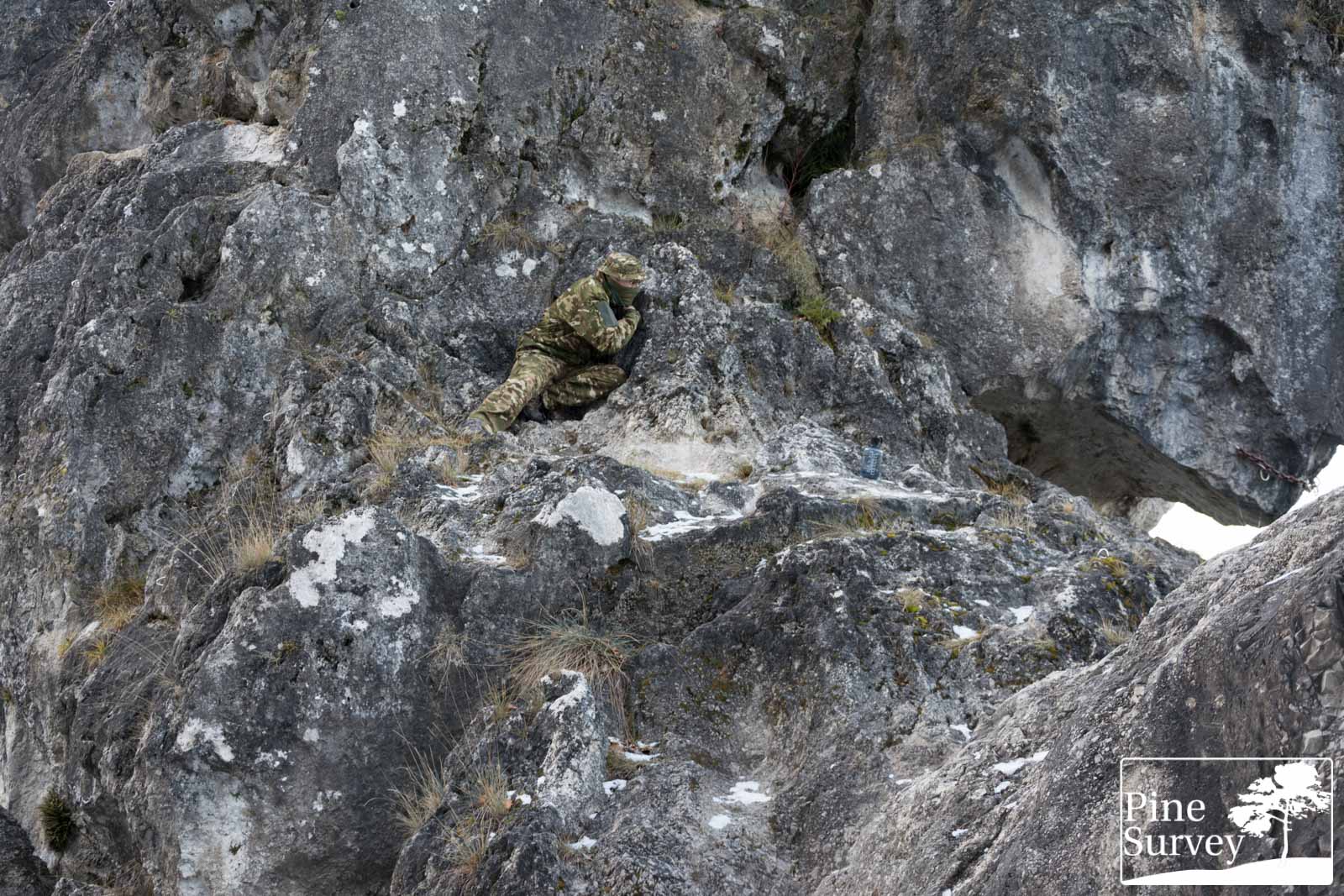
SloCam – leaning, 35mm
Concluding remarks about SloCam
Having in mind SloCam was created as a universal camouflage pattern, which is supposed to be nationally unique, while at the same time compatible with NATO camouflage, one has to remember that it is not a specialised pattern like PenCott Metropolis.
However, you can tell that the designers had mountains in mind, given the surprisingly good camouflage effect in rocky areas with less vegetation. One thing that contributes to this is the much stronger contrast in the pattern and the bright midi elements ranging from light browns to whites.
Conclusion
After looking at the two patterns it was quite the surprise on how good both worked in an mountainous environment. And although I put both of them in one field test review, one should not make the mistake of thinking less about one or the other. While PenCott Metropolis is a highly specialized pattern, SloCam was always meant as an universal one. And in that SloCam definitely succeeds and gets not enough credit for it.
Having the versatility of PenCott Metropolis in mind, I am curious if the pattern will get the deserved attention when it will finally hit the market this spring. Especially users who work in countries with urban and mountainous settings, this will be a valuable pattern to work with.
When it comes to SloCam I don’t have to worry about it being used, since it is the official pattern of Slovenia and is also being used by other units.
With that being said, I hope I was able to give you another valuable insight into the world of camouflage.
Many thanks to UFPRO for the support with the SloCam set, and also my appreciation to Helikon-Tex for providing me with the PenCott Metropolis setup.
Thank you for reading!
Take care

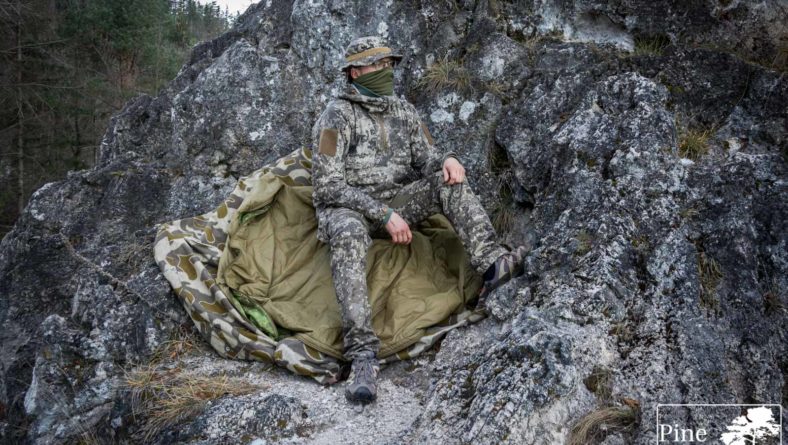
No Comment
You can post first response comment.